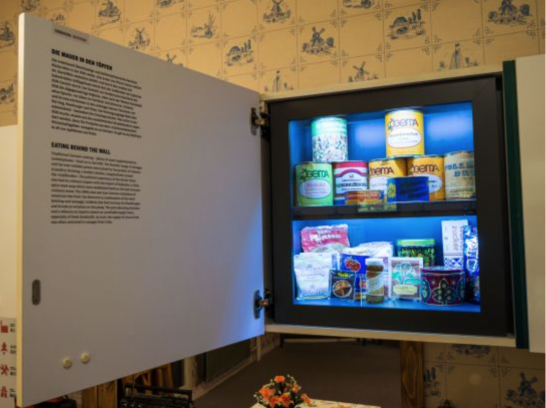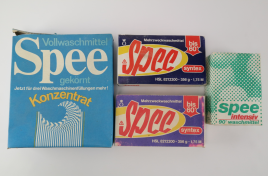Relics from the DDR
Part XIII: DDR products
(16 Nov 2016)
The border between the two German states did not only divide the people into East and West, but also the product world. Some of the articles which were developed in the DDR have survived the transformation after 1989 and have their fixed place in today's supermarkets in western and eastern parts of Germany.
Examples for success stories are Radeberger beer or the sparkling wine brand Rotkäppchen. Many more products can be found in almost every supermarket, even though only a few of about 700 DDR brands have survived the reunification of the country. A study from 2012 shows that only about 100 brands have remained. Among them are Florena hand lotion, mustard from Bautzen (Bautzener Senf), the beer brands Köstritzer and Wernesgrüner as well as products from the Spreewaldhof brand. Most of them, however, are not pure products of the East anymore. While mustard from Bautzen, for example, is still being produced in Saxony, the brand belongs to the Develey enterprise from Munich. Furthermore, today most of the beer brands belong to the Radeberger or Bitburger enterprises.
Many products have decided to leave their East German image behind since they want to be recognized for their quality rather than for their provenience. The washing agent Spee, for example, is not advertising itself as a product for the family from the East but as a detergent with an affordable price. It is, however, exactly the products advertising with their regional origin that can be found in West German supermarket shelves. This fact clearly contradicts the statement of the Rewe group spokesman who claims that a marketing focus on origin is "not up to date anymore". Especially customers from East Germany are deliberatly choosing products like Rotkäppchen, Rügen fish from Sassnitz, Halloren chocolate or Wikana cookies.
Which products from the East do you especially like? How do you feel about the fact that many companies are rejecting and abandoning their East German heritage? We are looking forward to your contributions.

